The colour, texture and weight of plates and silverware, background noise, and who we eat with all have an impact on flavour, according to research led by food scientist Charles Spence.
The study found that consumers were willing to pay up to three times more on a well-plated dish.
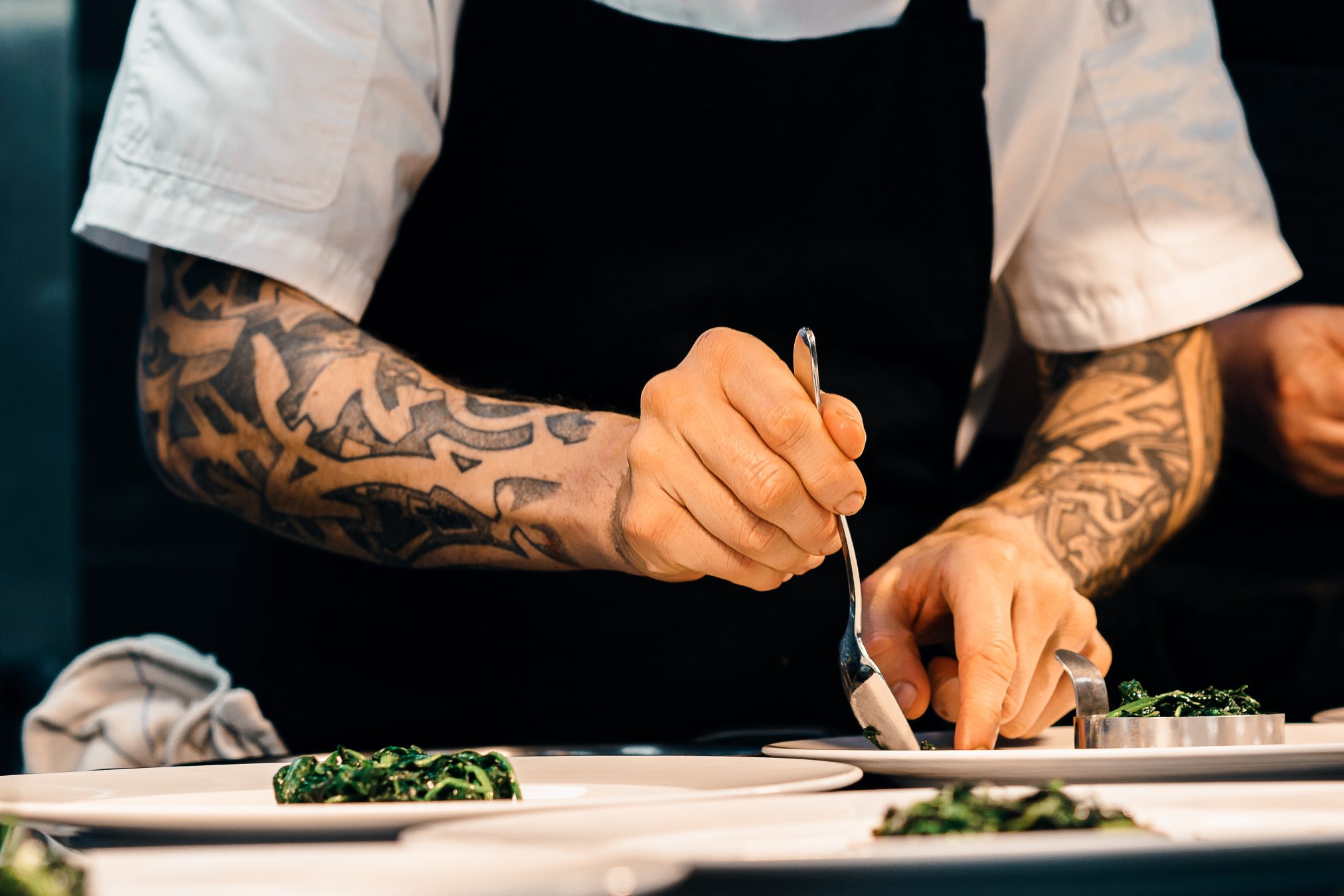
Spence offered three salads to 60 participants in the study, asking them to score each one both before and after they ate them. The ingredients in each salad were the same, but they were presented differently. One salad was put together carelessly, another was perfectly plated, and the third was plated to replicate a painting by Wassily Kandinsky. Even though all three salads had the exact same ingredients, 29% of the people said the salad that resembled a painting tasted better.
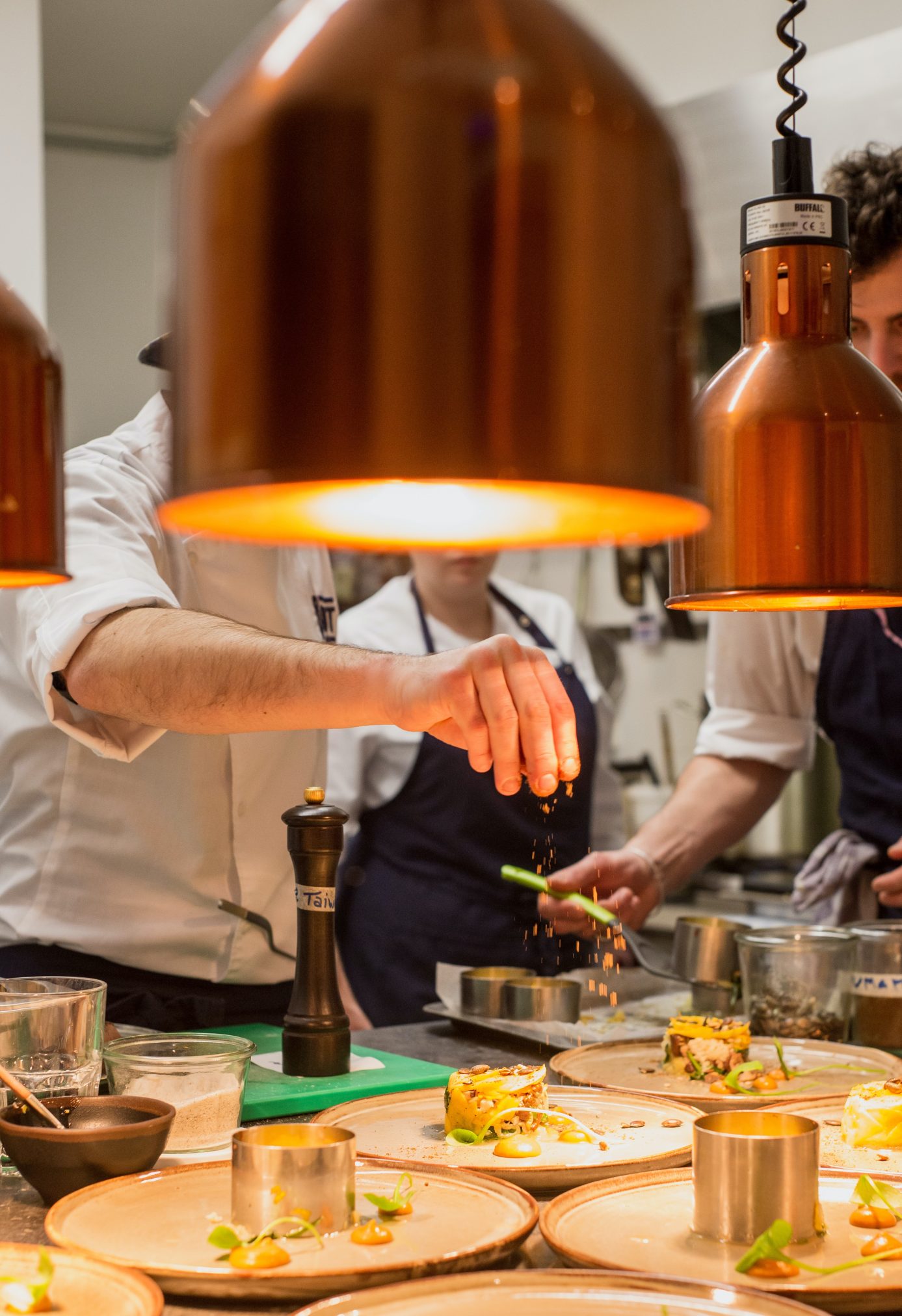
COLUMBIA signature’s Corporate Chef, Yannick Peltier says that “In gastronomy, and even more nowadays with all the tools available, we prepare a dish as we compose a painting: you see the first draft, and as you taste, you perceive the touches, the lines, the nuances, the textures that you had not perceived at the beginning and that changes your first judgment, your mode of consumption and the way you perceive the food. It is both a visual and textural experience.”
There are numerous ways to plate a dish and it all depends on the type of food being served, the atmosphere of the restaurant or event, the ingredients on the plate, and so on. Our Corporate Chef Yannick Peltier says he doesn’t forbid himself of anything when it comes to setting a plate, but always remembers that beyond the beautiful, there’s a message shared with the costumer: “There’s a story that tells them the exceptionality of the product they will taste, the marriage of flavours they are about to discover, the astonishment they are about to feel.”
Some techniques to work as a foundation if you want to improve your plating skills could be:
Choose the right plates
This depends on a few things, especially the type of food being served and whether the setting in which it is being served is formal or casual. Chefs tend to prefer white plates because it provides contrast between the plate and the colour of the ingredients, highlighting the food being served.
The right plate colour should pair well with the colour of the dish – for instance, white and beige foods, such as pasta, potatoes, and chicken pair well with brown and black plates. Green salads and vegetables pair well with yellow plates and red foods pair well on white plates. The intention is to highlight the food and not have the colours clash with each other.
Serve smaller portion sizes
Limit the number of ingredients on each dish to no more to avoid a cluttered appearance. Keep it simple – a smaller portion is easier to style.
Our Corporate Chef adds: “Always center well, leave 2 or 3 centimeters at the edge of the plate, always an odd number of products but never three.”
Use edible garnishes and decorations
Everything you use as a garnish should be edible – the priority is to add elements that will elevate the taste of the dish, and the way it looks comes second.
According to Yannick Peltier, “Allowing yourself freedom must come down to one rule which is go to the essentials, so that aesthetics does not overcome taste. For me as a chef, to make a beautiful plate, it is necessary to purify to the maximum. It is an alliance between balances, textures, colours and emptiness.”
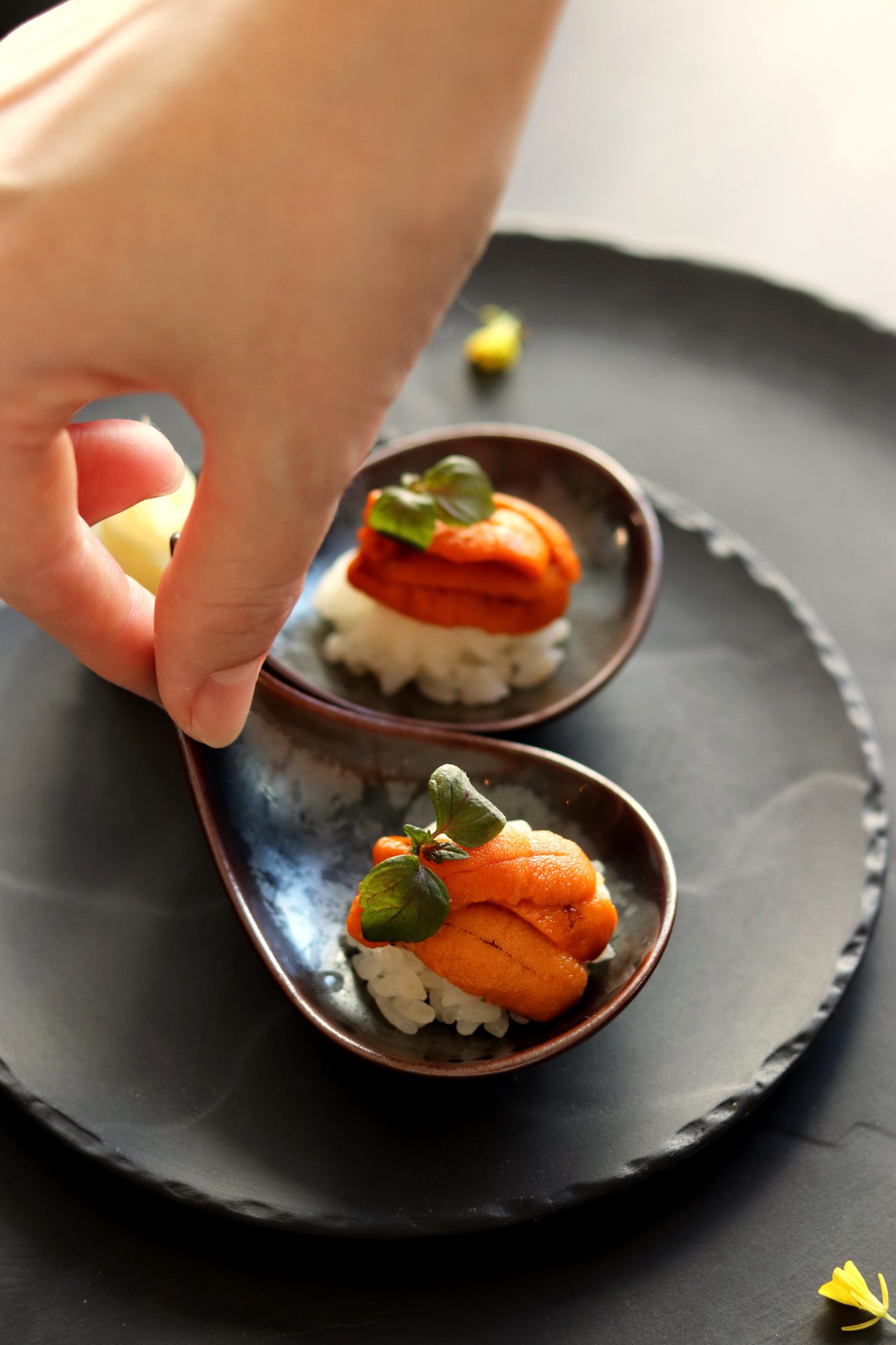
Highlight the key ingredient
The plate’s focal point is typically the main item. On a savoury dish, this is often a protein, such as meat, fish, or poultry. Here the cooking technique and butchering skills are essential to a good presentation. Vegetarian dishes usually highlight pasta, risotto, grains, and legumes.
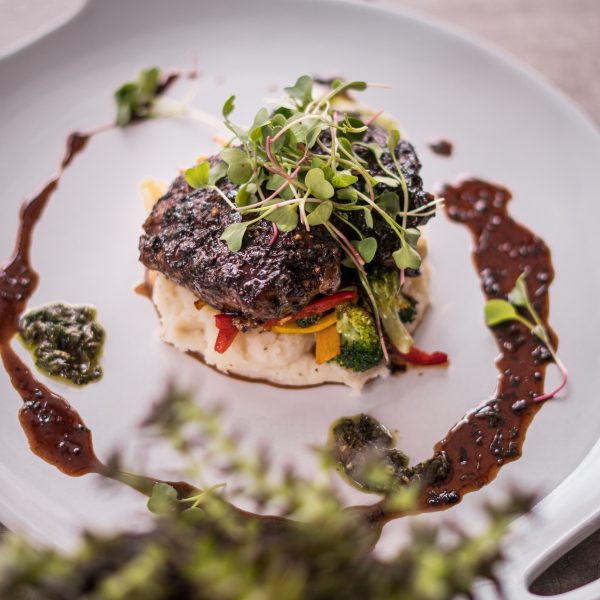

Sauces
This includes traditional brown, white and butter sauces, as well as vinaigrettes, mayonnaise, purees, compotes, chutneys, and so on.
The key to a good sauce that will help bring all the elements of a dish together is achieving the right colour, consistency and texture.
Tools for plating
Brushes, squeeze bottles, offset spatulas and spoons for applying sauces on a plate. Tweezers and chopsticks are helpful for placing ingredients and tiny garnishes. Stacking rings and molds can bring height to the dish and help keep the food contained.

Add textures
Vegetable chips, pastry or vegetables can add a crispy texture to the dish, while purees and sauces offer a soft texture and help provide support to the main item.
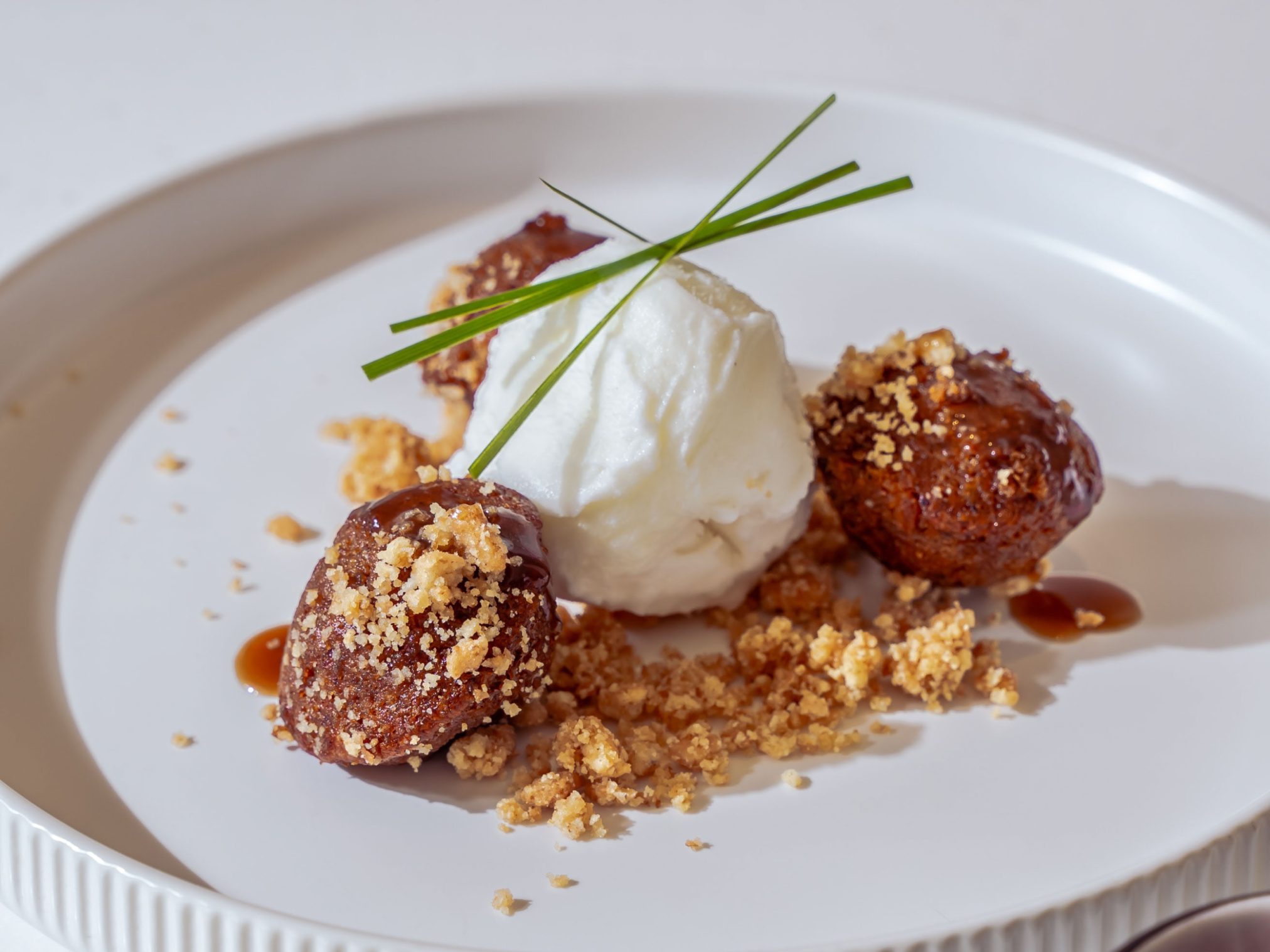
And to finish off, here are some extra tips from Yannick Peltier:
In culinary art, the art of dressage has long had its rules and standards. With the evolution of consumption patterns, many Chefs are freeing themselves from it. Depending on which level you are exercising your art you can express it in many various ways but always remember to not try to overwhelm your clients, try to make them understand where you want to bring them with your dish.”
We must not try to put technique for the sake of technique. The important thing is that the customer leaves thinking: Wow that was good!”



